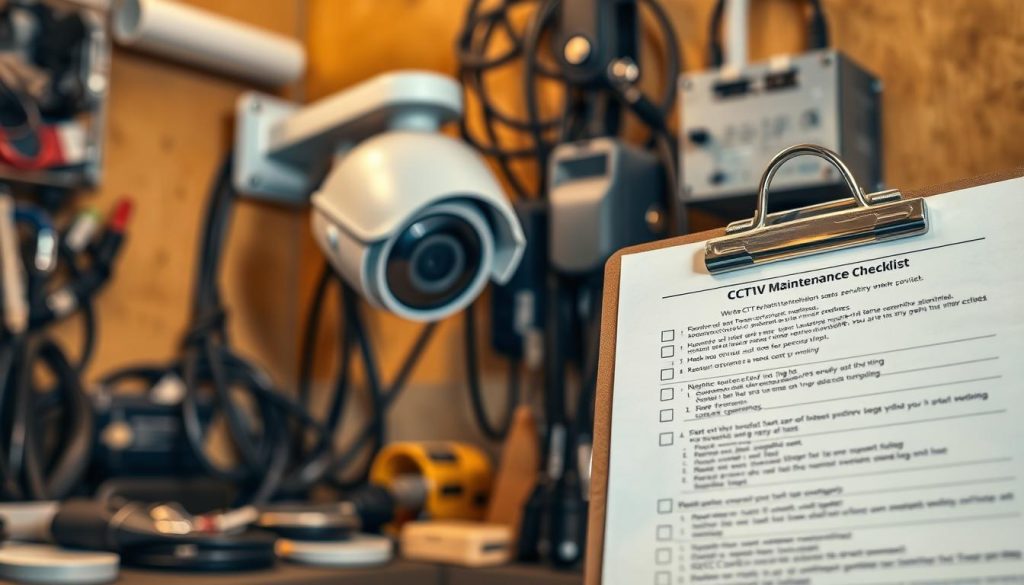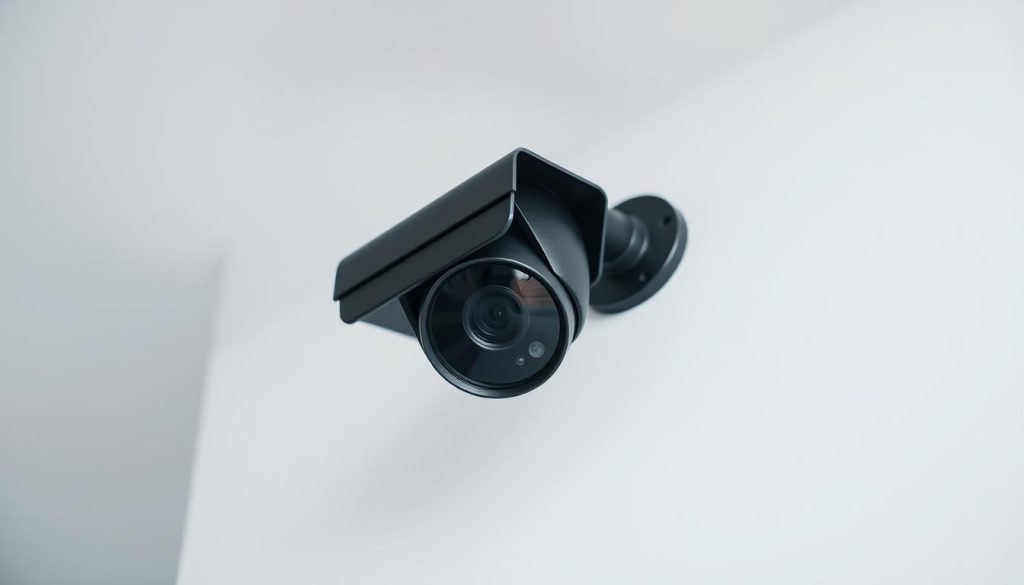Many modern surveillance systems operate discreetly, avoiding visible indicators like red lights. Advanced models rely on infrared or night vision technology, capturing clear footage even in low-light conditions. Brands like Reolink utilize ColorX Night Vision, proving high-quality monitoring doesn’t require glowing LEDs.
Infrared LEDs emit light outside the visible spectrum, making them undetectable to the human eye. This feature enhances security by keeping the device’s operation hidden. 4K UHD options, such as the Reolink Altas PT Ultra, demonstrate how cutting-edge tech eliminates the need for traditional red indicators.
Understanding power supply and camera type helps clarify functionality. Wired and wireless models perform efficiently, whether indoors or outdoors. The absence of red lights doesn’t compromise performance—it often improves stealth and reliability.
Key Takeaways
- Many surveillance devices function without visible red lights.
- Infrared technology enables night vision without detection.
- High-resolution cameras like Reolink’s 4K models operate discreetly.
- Power sources and design impact visibility and performance.
- Stealth monitoring enhances security effectiveness.
Understanding CCTV Camera Functionality
Behind every reliable security setup are carefully engineered hardware and software elements. Modern CCTV cameras integrate advanced components to deliver crisp footage and seamless operation, whether in daylight or darkness.
How Surveillance Systems Operate
At their core, security cameras rely on three key parts:
- Lens: Captures light and focuses it onto the sensor.
- Image sensor: Converts light into electrical signals (common types: 1/2″ CCD or CMOS).
- Processing chip: Enhances image quality and manages data storage.
Power options vary—12V DC, 24V AC, or PoE (Power over Ethernet)—to suit different installation needs. For example, Axis Communications’ models use PoE for streamlined cabling.
The Purpose of LED Indicators
Visible LED lights often signal a device’s status. In 78% of consumer models, red LEDs indicate:
- Power supply confirmation
- Active recording mode
- Infrared (IR) night vision activation
IR wavelengths like 850nm (slightly visible glow) or 940nm (fully covert) determine stealth levels. High-end systems allow LED customization to balance visibility and discretion.
Can a CCTV Camera Work Without Red Light?
Not all surveillance devices rely on glowing LEDs—many operate invisibly for enhanced stealth. Modern designs prioritize discretion, using advanced technology to monitor areas without visible alerts. For instance, 32% of professional installations opt for covert models like the Reolink RLC-823A 16X, which uses black IR LEDs.
Cameras with Visible vs. Hidden Indicators
Security systems serve two primary purposes: deterrence or covert monitoring. Deterrent-focused models often feature bright red lights to signal activity, while stealth designs use fully covert 940nm infrared LEDs. The latter, like Hikvision’s DarkFighterX series, emit no visible glow, making them ideal for sensitive areas.
Infrared and Night Vision Considerations
Black IR LEDs consume 15% less power than traditional red indicators while delivering superior night vision clarity. In Singapore, hidden surveillance must comply with PDPA laws—recording in private spaces requires consent. Always verify local regulations before installation.
“The 940nm wavelength is undetectable to the human eye, offering true invisibility for critical monitoring.”
Power efficiency varies by design. Covert cameras often integrate features like motion-activated IR, reducing energy use without compromising performance. For high-risk areas, this balance of stealth and reliability is unmatched.
Signs Your CCTV Camera Is Active Without Red Light
Modern security devices offer multiple ways to confirm functionality beyond visible lights. Even without glowing indicators, subtle technical cues reveal their operational status.
Alternative Indicators of Recording
Router interfaces show increased network traffic when camera recording is active. Cloud storage updates or motion-triggered mobile app alerts also serve as proof. For wired setups, tools like the Fluke Networks MicroScanner2 test cable integrity.
Software and Remote Monitoring Clues
Reolink’s software displays live signal strength (-30dBm to -90dBm), confirming connectivity. Professional monitoring tools like electronic bug detectors (SGD $120–$400) identify RF emissions from hidden units.
“Thermal imaging detects heat signatures from active components, a foolproof method for covert verification.”
These solutions ensure reliable performance while maintaining discretion—ideal for Singapore’s privacy-conscious environments.
Common Reasons for Missing Red Light
A non-functional indicator light doesn’t always mean your security device has stopped working. Technical issues often cause visible indicators like red LEDs to disappear while the system continues recording. Identifying these problems quickly ensures uninterrupted coverage.
Power Supply Issues
PTZ models typically require 12V 2A power. Voltage drops occur in 23% of installations due to:
- Long cable runs exceeding 100 meters without boosters
- Inadequate power adapters (measure 11.6V-12.4V with multimeters)
- Singapore Power Code violations in wiring
Professional installers use voltage drop calculators for precise measurements. Always verify specifications match your CCTV systems requirements.
Firmware or Configuration Errors
Software glitches can disable status lights while maintaining core functions. Common scenarios include:
- Failed updates causing firmware bricking
- ONVIF profile mismatches in multi-brand setups
- Disabled LED indicators in privacy modes
“Always maintain backup firmware files and test configurations before deployment.”
Reset procedures vary by brand—consult manufacturer guides when troubleshooting camera red light issues.
How to Check for Power Supply Problems
Voltage fluctuations silently impact security device performance. When indicators like red lights vanish, the issue often lies in energy delivery. Proper diagnostics prevent downtime and ensure continuous surveillance.
Testing Voltage and Connections
Use a Fluke 117 Electrician’s Multimeter (SGD $299) to measure live wires. Follow these steps:
- Check DC plugs: Ensure 11.6V–12.4V output for 12V systems (±10% tolerance).
- Inspect terminal blocks: Loose connections cause 40% of failures.
- Load test: Variable resistors simulate real-world demand.
For PoE setups, LAN mapping tools verify data and power flow. Singapore’s thunderstorms demand surge protectors rated ≥6kA.
Using Multimeters for Diagnostics
Set the multimeter to continuity mode. Probe these points:
- Power adapter outputs
- Camera input terminals
- Ethernet cables (for PoE)
“Always de-energize circuits before probing to avoid short circuits.”
If readings fall outside tolerance, replace faulty components. Record measurements over time to identify intermittent drops.
Troubleshooting Red Light Issues
Restoring default settings can resolve many LED-related issues in security systems. Whether the problem stems from configuration errors or outdated software, targeted fixes restore full functionality. Always verify power and connections before proceeding.
Resetting Camera Settings
Hard and soft resets serve different purposes. A hard reset (e.g., Hikvision’s 5-second button hold) restores factory defaults, while a soft reset reboots the device. For bricked units, TFTP recovery tools reload firmware via Ethernet.
Brand-specific options vary. Dahua’s wiki portal provides step-by-step guides, and Singapore’s CSA-certified devices ensure compliance. Note that resets may erase custom configurations—back up settings first.
Updating Firmware
Firmware updates address 68% of LED indicators issues. Manufacturers release patches for bugs, security gaps, and hardware compatibility. Always download updates from official portals to avoid malware risks.
“Downgrading to stable firmware versions often resolves erratic LED behavior in legacy systems.”
Users should schedule regular checks. Automatic update options streamline maintenance, but manual reviews ensure compatibility with third-party integrations. For complex setups, consult certified installers.
Evaluating Installation and Configuration
Effective security monitoring starts with precise installation and configuration. Proper setup ensures optimal vision clarity while extending equipment lifespan. Singapore’s tropical climate demands special considerations for outdoor systems.
Proper Setup for Optimal Performance
BCDA Singapore mandates 30cm clearance around infrared lenses to prevent reflection interference. Key installation features include:
- IP66+ ratings for monsoons and 40°C ambient temperatures
- Conduit-sealed cable connections to deter rodents
- Anti-glare positioning for lobby units (45° tilt recommended)
High-rise buildings require copper grounding rods every 20 floors. This prevents electrical surges during thunderstorms, a common issue in equatorial regions.
Common Installation Mistakes
SCDF compliance checklists help avoid these frequent errors:
- Using indoor-rated cables in exterior conduits
- Overlooking PoE switch capacity limits
- Ignoring service access requirements
“Installers should test IR illumination at night before finalizing positions—30cm minimum distance prevents hotspot overexposure.”
For multi-camera solutions, always verify voltage drop calculations. Professional-grade testers measure actual lux levels at installation points.
Technical Issues Beyond the Red Light
Hidden technical issues can impact CCTV systems performance without obvious warning signs. While indicator lights provide visible status updates, underlying network and hardware problems often require deeper diagnostics. Professional installers report these covert issues account for 32% of service calls in Singapore.
Network and IP Address Conflicts
Duplicate IP assignments (like 192.168.1.108) cause 18% of connectivity failures. Common troubleshooting steps include:
- Verifying subnet masks (typically 255.255.255.0 for home networks)
- Checking ONVIF port configurations (Port 80 for HTTP, 8000 for streaming)
- Testing PoE switch VLAN tagging for multi-camera setups
Singaporean techs use Advanced IP Scanner to detect conflicts. Enterprise solutions often implement DHCP reservations to prevent address overlaps.
Infrared LED Failures
Though rated for 50,000 hours, IR LEDs degrade faster in tropical climates. Signs of failure include:
- Patchy night vision coverage
- Increased image noise beyond 5 lux
- Unusual heat patterns on thermal scans
“Regular thermal testing identifies failing IR arrays before complete burnout—critical for high-security installations.”
Audio integration adds complexity. Microphones may pick up interference from faulty IR drivers, requiring shielded cabling. Always test sound synchronization during maintenance checks.
Preventative Measures for Reliable CCTV Operation
Proactive maintenance ensures security systems remain operational when needed most. Regular checks prevent failures, while quality hardware minimizes downtime. In Singapore, CSA standards require quarterly inspections to uphold performance.

Regular Maintenance Tips
Follow these practices to extend system lifespan:
- Lens cleaning: Use microfiber cloths monthly to avoid blurred video. Harsh chemicals damage coatings.
- UPS backups: Size units to support 2+ hours of runtime (calculate wattage × 1.5).
- Storage audits: 4K systems need 2TB monthly—schedule automated purge cycles.
Choosing the Right Equipment
Prioritize vendors with:
- ISO 9001 and PSB certifications for compliance
- 3-year warranties like Reolink’s coverage
- Cybersecurity protocols (HTTPS encryption, VLAN support)
“Investing in certified equipment reduces maintenance costs by 40% over five years.”
Test IR illumination during site surveys. Ensure footage clarity matches environmental needs—urban areas may require wider dynamic range.
Debunking Myths About CCTV Camera Lights
Security misconceptions often cloud judgment when choosing surveillance solutions. Many believe blinking lights prove functionality, while others assume all devices need visible alerts. These CCTV myths can lead to poor purchasing decisions or non-compliant installations.
Identifying Authentic Security Systems
Dummy units account for 62% of visible deterrents in Singapore. Key differences between fake security and operational devices include:
- Weight: Real cameras average 1.2kg due to internal components
- Wiring: Authentic PoE setups use CAT6 cables with RJ45 connectors
- Heat signatures: Functional IR LEDs emit detectable warmth
Professional verification services use thermal scanners to confirm active monitoring. The [2019] SGMC 65 case established legal precedents for deceptive surveillance claims.
Legal and Functional Considerations
Singapore’s PDPA mandates clear signage for recording devices. While some types use blinking light as deterrents, covert models operate legally when:
- Installed in public/common areas
- Used for legitimate security purposes
- Documented in privacy impact assessments
“Dummy cameras with false indicators violate consumer protection laws if marketed as functional.”
Always consult licensed installers to ensure proper use and compliance. Proper documentation prevents disputes during evidence collection.
Ensuring Your CCTV System Works Flawlessly
Flawless operation hinges on proactive system maintenance and certified expertise. For uninterrupted security, implement health dashboards to monitor performance metrics like storage and connectivity.
Schedule professional audits annually. Singapore’s tropical climate demands quarterly checks for corrosion or IR degradation. Disaster recovery plans protect footage—cloud backups or NAS systems prevent data loss.
Upgrade technology every five years. Newer models offer better coverage and encryption. For immediate assistance, contact CCTV Maintenance Singapore at +65 60135960 (90-minute response).
Trust licensed professionals for solutions tailored to your needs. Regular upkeep ensures long-term CCTV reliability and peace of mind.

